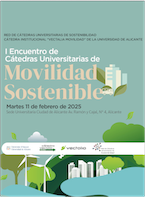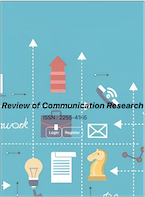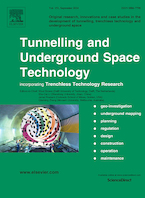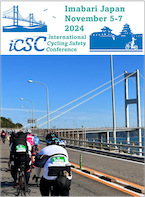Search result67 results
-

25th Spanish Congress ITS
Francisco Alonso
(2025). Participació en congressosDr. Francisco Alonso, Director of INTRAS, participates in the 25th Spanish ITS Congress, to be held in Madrid from February 18 to 20, 2025. Dr. Alonso takes part in the Session “Data Space for Mobility (DS4M) Projects. From NAPs to Data Spaces in Spanish Mobility”. Conference: The Data Space for Mobility Project In this Congress, whose motto is “Road to ITS Sevilla 2025”, the scope and content of important ITS projects will be presented, such as: MOVINN as an Innovation Platform, SCALE - C-Roads for the deployment of Cooperative Systems and DS4M for Mobility Data Spaces and boosting NAPs.
-

1st Meeting of University Chairs in Sustainable Mobility
Francisco Alonso
(2025). Participació en congressosDr. Francisco Alonso, Director of INTRAS, participated in the 1st Meeting of University Chairs in Sustainable Mobility, which was held in Alicante on February 11, 2025. Mobility is in full transformation and faces important challenges such as sustainability, decarbonization, new habits of new generations or shared and multimodal mobility increasingly present. Perhaps that is why in recent years more and more universities have incorporated and created different chairs for reflection and research on this subject. In this First Meeting of University Chairs of Sustainable Mobility, the most outstanding projects and works on mobility of the different chairs were presented. Dr. Alonso briefly...
Dr. Francisco Alonso, Director of INTRAS, participated in the 1st Meeting of University Chairs in Sustainable Mobility, which was held in Alicante on February 11, 2025. Mobility is in full transformation and faces important challenges such as sustainability, decarbonization, new habits of new generations or shared and multimodal mobility increasingly present. Perhaps that is why in recent years more and more universities have incorporated and created different chairs for reflection and research on this subject. In this First Meeting of University Chairs of Sustainable Mobility, the most outstanding projects and works on mobility of the different chairs were presented. Dr. Alonso briefly commented on his experience in the SEOFER Chair of Road Safety and Intelligent Mobility, in addition to explaining the details of the new project “ITS DS4M Mediterranean: Data Space for Mobility”, funded by the Ministry for Digital Transformation and Public Administration through the call “Demonstrators and Use Cases of Data Spaces”.
Read more Hide -

Use of Big Data, Artificial Intelligence and Other Emerging Technologies in Public Health Communication Campaigns: A Systematic Review
Mireia Faus, Francisco Alonso, Cesáreo Fernández, Cristina Esteban
(2025). ArticleReview of Communication Research. No.13
Introduction: Public health campaigns have begun to employ various emerging technologies such as artificial intelligence (AI) and Big Data for their design, implementation, and evaluation. These technologies offer new opportunities to enhance the effectiveness of health communication strategies by enabling more precise audience segmentation, personalized messaging, and real-time impact assessment. However, despite their potential, their application in public health campaigns remains a relatively new field of study. This systematic review aims to identify and analyze the scientific literature that examines the role of these tools in optimizing communication strategies aimed at promoting...
Introduction: Public health campaigns have begun to employ various emerging technologies such as artificial intelligence (AI) and Big Data for their design, implementation, and evaluation. These technologies offer new opportunities to enhance the effectiveness of health communication strategies by enabling more precise audience segmentation, personalized messaging, and real-time impact assessment. However, despite their potential, their application in public health campaigns remains a relatively new field of study. This systematic review aims to identify and analyze the scientific literature that examines the role of these tools in optimizing communication strategies aimed at promoting healthy behaviors and attitudes among the population. Methods: Following the PRISMA methodology, 129 potentially relevant articles were initially identified from the search in the WOS, Scopus and PubMed databases. However, only 18 met the established inclusion criteria. Results: We identified a scarcity of scientific articles focused on presenting findings on the application of emerging technologies in public health campaigns. Most of the research focused on the use of these tools for audience segmentation and impact assessment, while their use in campaign design was a minority. Conclusions: This study supports the usefulness of the application of these technologies at any stage of the campaign implementation process, and presents some limitations that can help optimize this approach and improve the reach and effectiveness of public health communication strategies.
Read more Hide DOI: 10.52152/RCR.V13.3 -

Traffic safety improvement method for highway tunnel entrances based on linear guiding − An engineering practice from China
Yongzheng Yang, Zhigang Du, Francisco Alonso, Mireia Faus, Hongliang Wan
(2025). ArticleTunnelling and Underground Space Technology. No.156:106267
To improve traffic safety at the entrance of highway tunnels, a comparative analysis of the traffic environment inside and outside the tunnel was conducted, and an improvement scheme based on “linear visual guiding” was developed by considering the human factors. Before and after the improvement of nine experimental tunnels, two batches of vehicle experiments were conducted to analyze the improvement effect of linear guiding scheme on traffic safety. The results show that the linear guiding scheme warns drivers and enables them to make preparations to enter the tunnel earlier. After improvement, the starting position for deceleration (SPD) was 61%earlier and the length of the deceleration...
To improve traffic safety at the entrance of highway tunnels, a comparative analysis of the traffic environment inside and outside the tunnel was conducted, and an improvement scheme based on “linear visual guiding” was developed by considering the human factors. Before and after the improvement of nine experimental tunnels, two batches of vehicle experiments were conducted to analyze the improvement effect of linear guiding scheme on traffic safety. The results show that the linear guiding scheme warns drivers and enables them to make preparations to enter the tunnel earlier. After improvement, the starting position for deceleration (SPD) was 61%earlier and the length of the deceleration section (LDS) has increased by 42%; the starting position for trajectory change (SPTC) was 153% earlier and the length of the trajectory change section (LTCS) has increased by 44%.The improved deceleration and trajectory change are earlier and smoother, and the dramatic changes in speed and trajectory in the tunnel entrance are resolved. When entering the tunnel, drivers sequentially complete deceleration, vehicle trajectory adjustment, and visual adaptation to black-hole effect, disperses driving tasks, reducing the coupling of driving risks. And use linear guiding facilities to enhance the local brightness of the tunnel, enhancing the driver’s visual perception ability in the black-hole effect area. Linear guiding scheme has good results during day, night, and fog, and is able to improve traffic safety at tunnel entrances in all-weather and multiple time periods
Read more Hide DOI: 10.1016/j.tust.2024.106267ISSN: 1878-4364 -

Road safety compliance and enforcement: insights from user perceptions in Spain and the Dominican Republic
Francisco Alonso, Mireia Faus, Cristina Esteban, Sergio Useche
(2025). ArticleRevista Logos Guardia Civil. No.4
Regulations, the sanctioning system, and police supervision are among the main components for increasing road safety. In fact, most accidents are caused by non-compliance with the rules, and it is precisely the elimination and deterrence of these offending behaviors that must be based on an effective sanctioning system supported by the corresponding police supervision. This paper discusses some of the principles that enforcement must comply with in order to maximize its usefulness. To this end, this paper presents a series of empirical data from our own research, through surveys of the population (in Spain and the Dominican Republic), on the degree of knowledge of traffic regulations, the...
Regulations, the sanctioning system, and police supervision are among the main components for increasing road safety. In fact, most accidents are caused by non-compliance with the rules, and it is precisely the elimination and deterrence of these offending behaviors that must be based on an effective sanctioning system supported by the corresponding police supervision. This paper discusses some of the principles that enforcement must comply with in order to maximize its usefulness. To this end, this paper presents a series of empirical data from our own research, through surveys of the population (in Spain and the Dominican Republic), on the degree of knowledge of traffic regulations, the motivations that lead to compliance/non-compliance, as well as the penalties associated with non-compliance, the attributed and real probability of being sanctioned, and their assessment of the whole system, including the attribution of effectiveness. Finally, the aforementioned evidence is compared with key principles of learning and behavior (especially punishment), to see to what extent they correspond, thus drawing some conclusions about the common existing deficits in the reality of enforcement systems in many countries, which present an opportunity for improvement.
Read more Hide -

Assessing the impact of point-based license systems on road safety: A systematic review and meta-analysis
Francisco Alonso, Mireia Faus, Cristina Esteban, Bosco Martí
(2025). ArticleThe European Journal of Psychology Applied to Legal Context. No.17
Background: The driver’s license point-based system is a preventive measure for penalizing offenses committed by drivers with the aim of reducing road accidents, which has been applied in a large number of countries to date. The aim of this systematic review was to examine a set of studies that analyze the effectiveness of point-based licensing in relation to the reduction of road accidents, as well as its impact on other variables documented in the scientific literature. Method: In this systematic review and meta-analysis, we searched PubMed, Scopus, and Web of Science for reports published between date of database inception and September 2023. The review process was conducted following...
Background: The driver’s license point-based system is a preventive measure for penalizing offenses committed by drivers with the aim of reducing road accidents, which has been applied in a large number of countries to date. The aim of this systematic review was to examine a set of studies that analyze the effectiveness of point-based licensing in relation to the reduction of road accidents, as well as its impact on other variables documented in the scientific literature. Method: In this systematic review and meta-analysis, we searched PubMed, Scopus, and Web of Science for reports published between date of database inception and September 2023. The review process was conducted following the PRISMA recommendations and requirements. This procedure acquired 26 items that met the eligibility requirements of the study. Results: It is noted that point-based driving licenses are beneficial for road safety as they discourage drivers from committing infractions or risky behaviors and, consequently, contribute significantly to reducing road accident rates in the regions where they are applied. Specifically, meta-analysis indicate that point-based driving license reduced, as an overall, around 21% the negative outcomes related to traffic, 10% fatalities, and 9% non-fatal injuries. In addition, it is identified that users value the measure positively, and perceive that its purpose is to raise awareness and improve road safety, rather than its sanctioning or collecting role. Conclusions: The findings support the implementation and expansion of the point-based license system in more countries around the world as a valuable strategy to reduce traffic accidents and promote a safer driving culture.
Read more Hide DOI: 10.5093/ejpalc2025a2 -

1st International Congress for Road Safety and Security Equipment
Francisco Alonso, Mireia Faus, Cristina Esteban, Sergio Useche
(2025). Participació en congressosDr. Francisco Alonso, Director of INTRAS, participated in the 1st International Congress for Road Safety and Security Equipment, which was held on January 18-19, 2025 in Benghazi, Libya. Dr. Alonso presented the paper “Best Law Enforcement Practice for Road Safety: Implementing Point-Based Driving License Systems” co-authored by Mireia Faus, Cristina Esteban and Sergio Useche. The congress was held within the framework of the UN Global Plan for The second Decade of Action For Road Safety ( 2021 – 2030 ) following The Brasilia Declaration to achieve the Sustainable Development Goal 3.6 to halve the number of global deaths & injuries from road traffic accidents by 2030. The event, themed...
Dr. Francisco Alonso, Director of INTRAS, participated in the 1st International Congress for Road Safety and Security Equipment, which was held on January 18-19, 2025 in Benghazi, Libya. Dr. Alonso presented the paper “Best Law Enforcement Practice for Road Safety: Implementing Point-Based Driving License Systems” co-authored by Mireia Faus, Cristina Esteban and Sergio Useche. The congress was held within the framework of the UN Global Plan for The second Decade of Action For Road Safety ( 2021 – 2030 ) following The Brasilia Declaration to achieve the Sustainable Development Goal 3.6 to halve the number of global deaths & injuries from road traffic accidents by 2030. The event, themed “Governance and Management of Road Safety in Libya: Reality and Challenges”, was supported by prominent Libyan institutions, including the Chief of Staff of the Land Forces, the Ministry of Interior, and the Benghazi Chamber of Commerce and Industry, with additional backing from the Ministries of Foreign Affairs and Health.
Read more Hide -

First Regional Meeting for Latin America
Francisco Alonso
(2024). Participació en congressosDr. Francisco Alonso, Director of INTRAS, participated in the First Regional Meeting for Latin America held on November 5-7, 2024 in Mexico. Dr. Alonso spoke about the study “Licensing by points” worked together with the Aleática Foundation, generating a workshop on the importance of the driver's license by points. Organized by the Global Alliance of NGOs for Road Safety, the Meeting aimed to address the most urgent and critical issues facing the road safety community in Latin America. It aims to strengthen and enhance the Alliance's network and regional chapter to facilitate strong action and mobilize NGOs to demand at the next Global Ministerial Conference that adequate investment be...
Dr. Francisco Alonso, Director of INTRAS, participated in the First Regional Meeting for Latin America held on November 5-7, 2024 in Mexico. Dr. Alonso spoke about the study “Licensing by points” worked together with the Aleática Foundation, generating a workshop on the importance of the driver's license by points. Organized by the Global Alliance of NGOs for Road Safety, the Meeting aimed to address the most urgent and critical issues facing the road safety community in Latin America. It aims to strengthen and enhance the Alliance's network and regional chapter to facilitate strong action and mobilize NGOs to demand at the next Global Ministerial Conference that adequate investment be allocated to implement people-centered, evidence-based interventions to save lives.
Read more Hide -

ICSC 2024
Sergio Useche, Oscar Oviedo-Trespalacios, Francisco Alonso
(2024). Participació en congressosWhat do European cyclists think about Advanced Cyclist Assistance Systems (ACAS) and their features? INTRAS researchers participate in the 12th International Cycling Safety Conference, to be held from 5 to 7 November 2024 in Imabari (Japan). The mission of the International Cycling Safety (ICS) community is to improve cycling safety through scientific work. The ICS community intends to disseminate scientific results to all cycling safety stakeholders. The yearly ICS conferences offer a premium forum to share scientific results and to favor networking inside the ICS community. Theme of ICSC 2024: Cycling Safety Culture To date, there is an ever-increasing interest in research, from...
What do European cyclists think about Advanced Cyclist Assistance Systems (ACAS) and their features? INTRAS researchers participate in the 12th International Cycling Safety Conference, to be held from 5 to 7 November 2024 in Imabari (Japan). The mission of the International Cycling Safety (ICS) community is to improve cycling safety through scientific work. The ICS community intends to disseminate scientific results to all cycling safety stakeholders. The yearly ICS conferences offer a premium forum to share scientific results and to favor networking inside the ICS community. Theme of ICSC 2024: Cycling Safety Culture To date, there is an ever-increasing interest in research, from policy level to road and street level, on the issue of how to achieve safe cycling in society. Discussions on such research focus on defining the cycling safety culture, explore road user behaviour and the activities of people and organisations involved in road safety, and include an ongoing debate on how researchers around the world can contribute to safe cycling. Therefore, by focusing on cycling safety culture, the conference hopes to provide an opportunity to gain a better understanding of the state of cycling safety in the world and to foster international collaboration among researchers to reduce cycling crashes and injuries.
Read more Hide -

ICSC 2024
Sergio Useche, Oscar Oviedo-Trespalacios, Francisco Alonso
(2024). Participació en congressosWorkshop "Moving from the present to the future: upcoming issues, methods and challenges in cycling safety research" INTRAS researchers participate in the 12th International Cycling Safety Conference, to be held from 5 to 7 November 2024 in Imabari (Japan). The mission of the International Cycling Safety (ICS) community is to improve cycling safety through scientific work. The ICS community intends to disseminate scientific results to all cycling safety stakeholders. The yearly ICS conferences offer a premium forum to share scientific results and to favor networking inside the ICS community. Theme of ICSC 2024: Cycling Safety Culture To date, there is an ever-increasing interest in...
Workshop "Moving from the present to the future: upcoming issues, methods and challenges in cycling safety research" INTRAS researchers participate in the 12th International Cycling Safety Conference, to be held from 5 to 7 November 2024 in Imabari (Japan). The mission of the International Cycling Safety (ICS) community is to improve cycling safety through scientific work. The ICS community intends to disseminate scientific results to all cycling safety stakeholders. The yearly ICS conferences offer a premium forum to share scientific results and to favor networking inside the ICS community. Theme of ICSC 2024: Cycling Safety Culture To date, there is an ever-increasing interest in research, from policy level to road and street level, on the issue of how to achieve safe cycling in society. Discussions on such research focus on defining the cycling safety culture, explore road user behaviour and the activities of people and organisations involved in road safety, and include an ongoing debate on how researchers around the world can contribute to safe cycling. Therefore, by focusing on cycling safety culture, the conference hopes to provide an opportunity to gain a better understanding of the state of cycling safety in the world and to foster international collaboration among researchers to reduce cycling crashes and injuries.
Read more Hide









